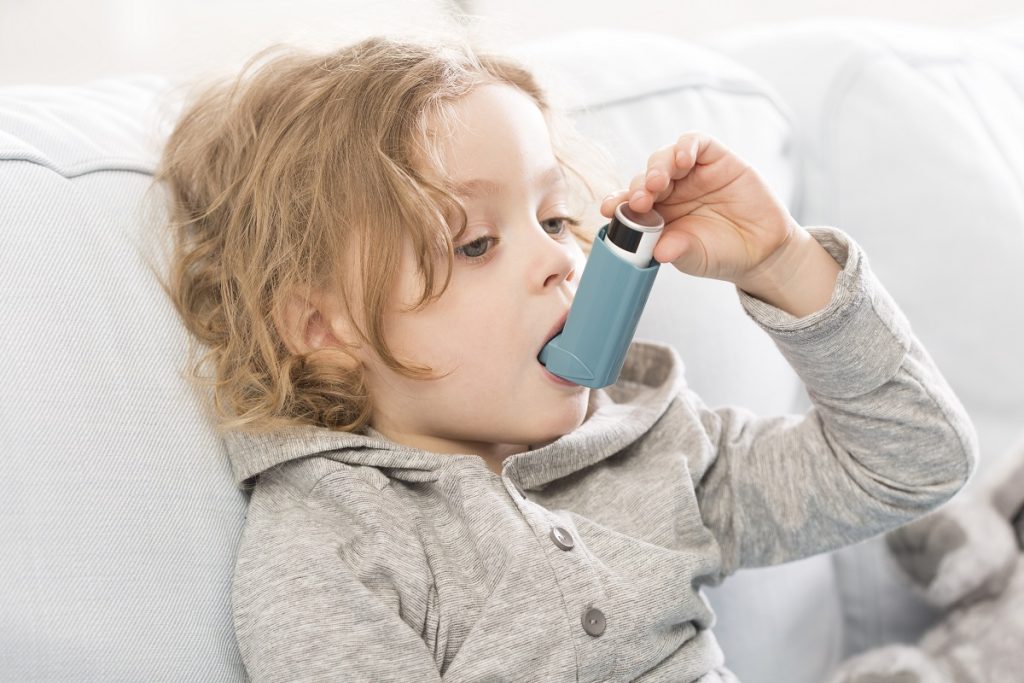- Asthma triggers are environmental or physical factors such as allergens, cold air, exercise, smoke, and strong emotions that can lead to an asthma episode.
- Two main medications are used for asthma treatment: quick-relief medicines for acute symptoms and long-term control medicines to prevent symptoms.
- Regular check-ups with healthcare providers are crucial to monitor the child’s asthma, adjust medications, and address concerns.
- Despite careful management, emergencies may still occur, so parents must recognize the signs of an asthma emergency and know how to respond promptly and efficiently.
Feeling overwhelmed is natural if you’re a first-time parent and your child has been diagnosed with asthma. The key to managing this situation lies in understanding the condition and how to respond to an asthma episode. You’ll learn about medications, triggers, and how to create an asthma action plan. Remember, having a child with asthma can be challenging but with knowledge, patience, and a supportive healthcare team, you can ensure your child lives a healthy and active life.
Educate Yourself
The first step toward effectively managing your child’s asthma is arming yourself with knowledge about the condition, its causes, its symptoms, and how it can be managed. Here are some things to consider:
Identify Triggers

Asthma triggers are environmental or physical factors that can lead to an asthma episode. They vary from one child to another but common ones include allergens such as dust mites, pet dander, pollen, or mold. Other triggers include respiratory infections, cold air, physical exercise, or strong emotions.
Smoke from cigarettes and air pollution are also hazardous. Identifying and managing these triggers is crucial in controlling asthma symptoms and preventing attacks. Consult your child’s healthcare provider to identify potential triggers and formulate strategies to minimize exposure. Remember, this isn’t always about avoiding triggers entirely but managing them effectively to ensure your child can lead an active and normal life.
Medication Mastery
Don’t be daunted by the range of medications available for asthma treatment. There are primarily two types – quick-relief medicines that alleviate acute symptoms and long-term control medicines that prevent symptoms. Quick-relief medications, such as albuterol, provide instant relief during an asthma attack.
Long-term control medicines, like inhaled corticosteroids, help reduce inflammation in the airways over time, preventing asthma symptoms from flaring up. Understanding how, when, and why each medication should be used. A spacer or holding chamber might be suggested for use with an inhaler, particularly for children, to ensure the medicine reaches the lungs effectively.
Adherence to the prescribed medication regimen is essential for managing asthma effectively. Always consult your child’s healthcare provider for guidance and never modify medication schedules without their approval.
Create an Asthma Action Plan
An Asthma Action Plan is a written document detailing your child’s daily treatment regimen, including the types of medicine to be taken, their dosage, and when they should be administered. It also clearly delineates what steps to take in case of an asthma flare-up or emergency. This plan is often color-coded into zones – green (good control), yellow (caution), and red (medical alert), helping you recognize when the symptoms are getting worse and what action to take.
Reviewing this plan with your child’s healthcare provider and ensuring that anyone who cares for your child, like teachers or babysitters, understands it completely is essential. A well-thought-out action plan can be instrumental in managing your child’s asthma effectively, instilling confidence, and ensuring a swift response during an asthma attack.
Regular Check-ups
Regular check-ups are crucial to monitor your child’s asthma and assess the effectiveness of the current treatment plan. These appointments allow the healthcare provider to evaluate your child’s symptoms, adjust medications if needed, and address any concerns or questions you may have.
Furthermore, lung function tests might measure how well your child’s lungs work. It’s important to communicate openly with your doctor about any changes in symptoms, concerns about medication side effects, or issues with adhering to the treatment regimen.
Remember that managing asthma is a collaborative effort between you, your child, and your healthcare provider. Regular check-ups are a valuable tool in this partnership, ensuring your child’s asthma is under control and that they are leading a healthy, active life.
Promote an Active Lifestyle

Just because your child has asthma does not mean they must refrain from physical activities. An active lifestyle is beneficial as it strengthens lung capacity and overall health. Encourage activities appropriate for their age and abilities while ensuring their asthma is well-managed.
While some children may experience exercise-induced bronchoconstriction, this can be controlled with proper medication and strategy. Always have their quick-relief inhaler available during physical activities and beware of exercising in cold weather or polluted environments which could trigger an asthma episode. Remember to include warm-ups and cool-downs in your exercise routine.
Swimming is often a good exercise for children with asthma as the warm, humid environment helps open airways. Consult with your healthcare provider about the level and type of exercise suitable for your child. With appropriate precautions and guidance, your child with asthma can participate in sports and lead an active lifestyle.
Prepare for Emergencies
Despite all your efforts to manage your child’s asthma, emergencies might still occur. Recognizing the signs of an asthma emergency, such as severe shortness of breath, difficulty speaking, bluish lips or face, or extreme anxiety due to breathing difficulties is crucial. In such cases, you should seek urgent care pediatric services immediately. These services specialize in dealing with such emergencies in children and have the requisite knowledge and tools to provide immediate care.
Remember always to carry a copy of your child’s Asthma Action Plan to help medical professionals better understand their medical history. In addition, learn and practice the steps to follow during an emergency, including when and how to use a quick-relief inhaler or nebulizer, and when to call for an ambulance. Being prepared for emergencies will allow you to act swiftly and efficiently, potentially saving your child’s life.
In conclusion, remember, your role as a parent is pivotal in managing your child’s asthma and ensuring they have a fulfilling life. Take the first step today and start a dialogue with your child’s healthcare provider about your concerns and questions. Together, you can overcome asthma.
